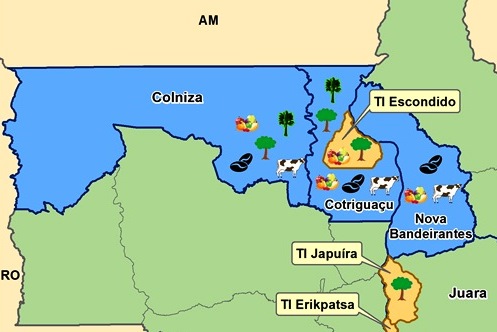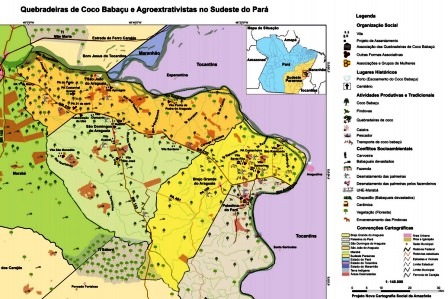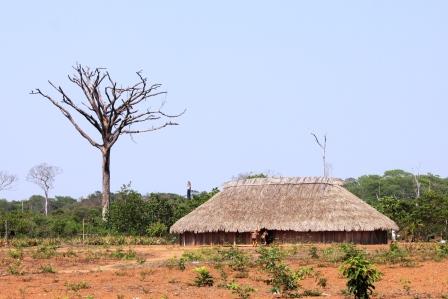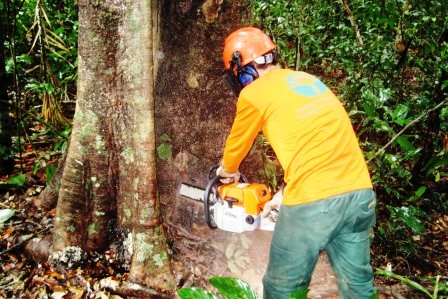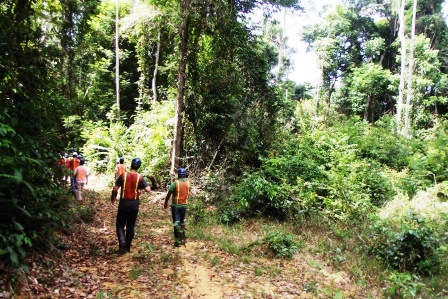RESULT AND IMPACT INDICATORS
The project activities contributed to the results related to the “Sustainable Production” (2) and “Science, Innovation and Economic Instruments” component (4) of the Amazon Fund Logical Framework.
Below are the results of some of the indicators agreed to monitor the expected direct effects.
- Number of individuals trained to practice sustainable economic activities (outcome indicator)
Target: 424 | Result achieved: 2,352
- Area recovered through AFSs used for economic purposes (outcome indicator)
Target: 1,550 ha | Result achieved: 1,550 ha
- Area of AFSs enriched with productive species (outcome indicator)
Target: 400 ha | Result achieved: 400 ha
- Number of seed houses built (output indicator)
Target: 7 | Result achieved: 5
- Number of seed houses remodeled (output indicator)
Target: 14 | Result achieved: 13
- Number of young people trained in social mobilization for participatory management of agroforestry projects (outcome indicator)
Target: 70 | Result achieved: 71
- Revenue obtained from the marketing of agroforestry products (outcome indicator)
Goal: not defined | Result achieved: R$6.9 million
Over the approximately six years of execution of the project, R$6.9 million were obtained in revenue from marketed products, with approximately half coming from sales in the local and regional markets and the rest from government purchases (PAA and PNAE).
- Number of surveys conducted on seed collection, processing and storage and on agroforestry monitoring (output indicator)
Target: 10 | Result achieved: 64
The measurements of the agreed indicators show that practically all expected values were reached or exceeded. Regarding the areas recovered and enriched through AFSs, which individually are relatively small, as a whole (about two thousand hectares) have a relevant impact on improving the environmental quality of the region, increasing the connectivity of forest fragments and, mainly, protecting springs and watercourses.
Institutional and administrative aspects
Management councils were created in the supported communities, as well as a general project council, involving both IOV technicians and farmers. The project periodically promoted meetings of the councils, as well as meetings of the technical team and regional meetings for integration and articulation between the communities of the eight municipalities covered by the project.
In this dimension, the work carried out in promoting the involvement of young people and women with the project is worth mentioning, with women representing 47% of the total direct beneficiaries of the project (3,905 of 8,246).
In the technical dimension, a partnership was established with Herbário da Amazônia Meridional no Campus Universitário de Alta Floresta (UNEMAT), instrumental for the identification of native species and the consolidation of the Seed Network of the Portal of the Amazon.
In the context of the activities of the Agroforestry Research Center, partnerships were established with several institutions, among which the Escola Superior de Agricultura Luiz de Queiroz (ESALQ) and UNEMAT stand out.
Risks and lessons learned
An important factor for the successful implementation of the project was the involvement of family farmers in all its stages, including its conception, that is, the project was subject to collective planning.
Among the various challenges and obstacles encountered can be mentioned the advancement of soybean and corn farming in the region covered by the project and the aerial spraying of agricultural pesticides that harmed some areas with AFSs implemented by the project.
In the project execution process, it was observed that the most successful areas were in more engaged communities, with active groups, which reinforced the importance of local councils, seed houses and marketing groups, among others. As a result of this finding, the project, after its initial phase, focused on communities with the pre-existence of a social web or interest in its formation.
The silvopastoral systems, which integrate crop-livestock-forest (ICLF), consisting of the combination of trees, pastures and cattle in the same area and at the same time¹, have entered as a new way of thinking about agroforestry, in addition to serving as a motivator for the approach of more farmers, since livestock is highlighted in the territory as the main income-generating activity for family farming. It is believed that this is an area that has the potential to generate future developments with regard to the continuity of the planting of these systems throughout the region.
Originally, the Amazon Fund's support for the implementation of the AFSs was conditional on all properties or assets benefited being registered in the Rural Environmental Registry – CAR until the end of the project (except for the agrarian reform settlements). However, throughout the implementation of the project, this condition was identified as excessive difficulty, since it was restricting the adhesion of farmers to the project, and, therefore, this requirement was changed, becoming registration in the car of at least 50% of the rural properties benefited and no longer their totality.
Sustainability of results
The aspects worked by the project directly affect the dynamics of deforestation by seeking to bring into the production logic the incorporation of trees and forests. His actions supported the generation of work and income in various activities and the fight against food insecurity, in addition to recovering degraded areas and changing the landscape.
The emphasis given to the project to the integration of young people and their training in various topics, including their training in participatory management of agroforestry projects, is an important legacy that will unfold in results and impacts beyond the period of its implementation.
Finally, the project, in addition to fulfilling its direct goals, brought self-esteem to family farming, valuing the family and local culture. Considering the nature of the actions supported, aimed at sustainable production and income generation for local populations, it is believed that this characteristic contributes so that the results achieved can be sustained over time and even expand.
¹ Source: Embrapa
